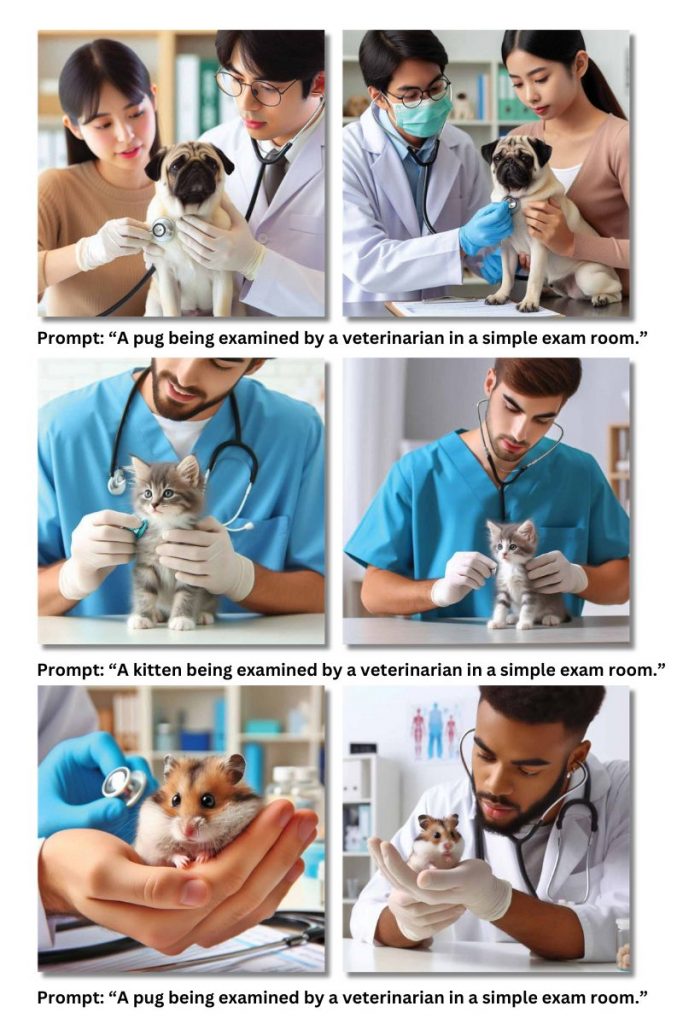
If you have not noticed lately, artificial intelligence (AI) is everywhere, popping up as part of the conversation to bring consumers and businesses closer to using certain tools. For a while, every advertisement mentioned AI as a way to draw in users and show their business tool was current and using the latest technology.
Before diving into how AI can help veterinary practices, we need to understand the technology and its use today.
AI as we know it
In my opinion, technology gives businesses an advantage when used correctly. For me, AI is just a tool that can improve productivity, review content, provide insight, and support business growth.
AI is not a new technology; it is just newly marketed and has become more accessible to businesses and consumers with the release of new apps and publicized integrations within many existing applications. The takeaway here is that AI has been around for decades and is now more accessible to help us improve as individuals and businesses.
There are seven types of AI1 used by businesses today: narrow AI, artificial generative intelligence, artificial super intelligence, reactive machine AI, limited memory AI, theory of mind AI, and self-aware AI. Artificial generative intelligence is the one we use most today as consumers and small veterinary practices. Companies, such as Netflix, have been using reactive machine AI to build predictive elements into their platform; and businesses like Tesla have been using limited memory AI to process environments around them.
ChatGPT was released to the public on Nov. 30, 2022. Prior to that, Google, Amazon, IBM, Microsoft, and Netflix, among others, had been using some form of AI to improve the user experience or optimize operations. Grammarly, a software tool writers and students use to check for grammatical errors and plagiarism, has been using AI and machine learning as part of the foundations of their software.
Some of the more popular AI tools used by the public today and growing business practices are Google’s Gemini, Microsoft’s Copilot, OpenAI’s ChatGPT and Dall-E, Anthropic’s Claude AI, and Perplexity AI. Each tool has pros and cons and supports different features at the paid and free levels.
Other popular paid tools with AI used in many industries for everything, from creative design and writing to automation and segmentation, include Canva, Jasper, TIDIO, and Klaviyo.
Setting expectations
There is no manual you can read to use many of the AI tools. There may be people online and companies like mine helping guide you, but it is not because any of us read a manual. People who get great results from AI are using their years of experience with the tool they have invested in and learning its nuances.
AI is more human-like than other tools you have used in the past, and like people, it will not be perfect and will require training. I often explain to my clients that we do not expect 100 percent reliability out of a person. We learn what an individual can handle well and delegate tasks based on performance and skills. We challenge people to improve–why not the AI? With this mindset in place, you and your team can learn to leverage AI effectively.
How can we use AI?
Here are several ways you can use AI in your practice to improve your operations and marketing.
Practice management
Running a veterinary practice is not easy. Like every business, you have processes you need your team to follow and standards you want them to uphold. You have human resource and business finance needs that need to be tackled. You may need help in reviewing documents. There is a mix of ways you can use AI tools to help you manage your internal practice.
Perplexity is a conversational search engine and can help look for detailed answers to business questions. For example, suppose you are considering opening practices in several states. In that case, you can discover the different legal requirements through Perplexity by prompting: “What are the state requirements for opening a veterinary practice in Massachusetts vs. New York?”2 The reply breaks down details of each state with sources. This is a great way to get started on your research.
AI can also be a great companion and guide when you need someone to review and analyze financials or detailed lists. For instance, if your team runs monthly inventory using Excel or Google Sheets to track the information, you can upload this information to tools like ChatGPT or Perplexity and ask each tool to analyze trends. What products are we going through quickly? What usage patterns do you see in our supplies? How far out should we plan to order certain supplies based on the past year’s inventory review?
The best way to approach using AI tools is to work with them like you would a human, and just like a human, we often have to rephrase a question. Upload your human resource manual, remove any pages or content that may be proprietary to your practice, and ask the AI if you need to update any areas due to changes in your local state or if AI has any recommendations on improving based on what businesses are doing today to keep top staff. You will get ideas and opinions from the AI you choose to use. Keep in mind using AI that has a connection to up-to-date data or the internet.
Review your current everyday applications and see what new features are popping up to help you run your practice. Microsoft has added AI resources to their Office 365 suite, and Dropbox recently launched Dash, an AI tool that helps you search for topics across multiple apps quickly. Over the next few months and year ahead, AI will be added to many tools to improve speed and the overall user experience.
Writing, marketing, and creatives
AI is best known for supporting content creators for the past year. Content writers and designers have leaned into using this tool to improve, create, or inspire their work. Using AI to support your business creatively and effectively is all about the human touch and the human connection; prompting and editing are what will get you the best outcomes.
Say you are sending out your monthly newsletter about the importance of caring for a certain breed or animal. You can create an image using Microsoft’s Copilot (Figure 1).

You should provide credit to AI for creating these images as a way of being transparent to your readers, but this can save you time from searching through stock sites and getting what you need for your marketing. I would like to note you may need to prompt image generators to be diverse, as one of the known issues with this tool is in its inaccurate representation of
our communities.
Most people leverage AI tools in content writing. Full disclosure: I write all my own social media posts and articles, but I then use these tools to edit my sentence structure and grammar.
Many of us know what we want to say, but we do not always know how we want to say it. Put in your first draft and ask the AI questions about your style and personality; then, use those results to create the prompt for reviewing and rewriting your content. Review your rewrites and adjust what it changed that took away your personality. We all have our own voice, and it is important to keep that when using AI tools. Take your final edits and feed them back into the AI so it can learn your style. This will make your next rewrite go much smoother.
There are too many ways to share how AI is helping marketers and creatives in just one article, from creating social media calendars to writing on-hold messages and commercials. One of my favorite ways to use AI is to respond to Google reviews and social comments. You and your team can leverage AI to be creative and productive daily.
The three most important things to remember are: first, you need to make using AI a habit. If you do not start using it each day, you will not really get to understand it, nor will it improve with you.
Second, these tools do not include instructions. While people like me can provide prompt ideas and direction, you must keep adjusting your prompts to truly learn.
Finally, set an AI policy for yourself and your organization regarding where AI is used, how it is used, and what disclosures are required.
Jennifer Shaheen is the founder and president of Technology Therapy Group, a strategic digital web and marketing firm that has been supporting growing businesses for over two decades. Learn more by visiting technologytherapy.com.
References
- 7 Types of Artificial Intelligence, author Sunny Betz. https://builtin.com/artificial-intelligence/types-of-artificial-intelligence
- Perplexity Prompt Reply. https://www.perplexity.ai/search/are-there-state-regulations-wh-HQUrO0NjRKauQtwZXrfjZA#2
